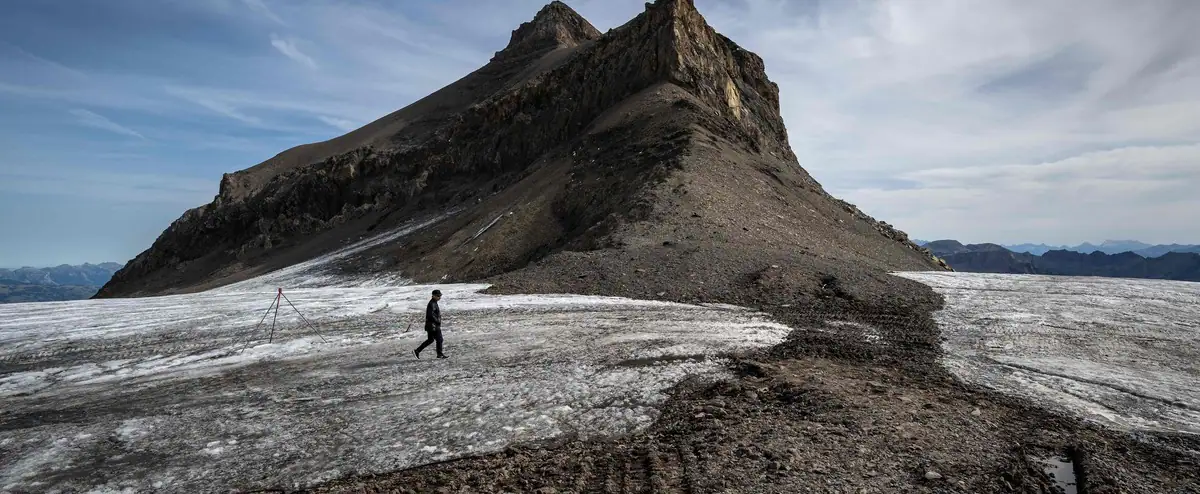This strip of land from the Col de Tsanfleuron has not been outdoors for more than 2000 years and Roman times. A dry winter and heatwaves that scorched Europe this summer overcame the still-resisting ice.
The pass is located at the junction of the Tsanfleuron glacier and the Scex Rouge at just over 2,800 meters above sea level between the canton of Vaud and Valais in southwestern Switzerland. It is located in the Glacier 3000 ski area.
Over the past few days, the Earth’s tongue has been completely outdoors, while, as Glacier 3000 recalls in a press release, “measurements in 2021 revealed ice thickness of about 15 meters at this place.”
“The summer of 2022, which was followed by an intermittent winter in rainfall, is already disastrous for the glaciers,” the statement noted.
For Dr Mauro Fischer, a glaciologist at the University of Bern, “the loss of glacier thickness in the Diablerets will be on average three times greater this year than in the past 10 seasons.”
half less
But the phenomenon of melting – melting now accelerating – is not isolated in this part of Switzerland.
Glaciers there have lost half their volume since 1931, according to a study published in August by scientists who first reconstructed glacier retreats in the 20th century.
La fonte des glaciers dans les Alpes – que les experts attribuent aux réchauffement climatique – est étroitement surveillée depuis le début des années 2000. close up.
To better understand its evolution, researchers from the Swiss Federal Institute of Technology in Zurich (ETH Zurich) and the Federal Institute for Forest, Snow and Landscape Research (WSL) reconstructed the topography of the Swiss glacier group found in 1931.
According to ETHZ and WSL, “Based on these reconstructions and comparing them with data from the 2000s, researchers conclude that the size of the glaciers halved between 1931 and 2016”.
The study, published in the scientific journal La Cryosphère, notes that glaciologists used archival images (21,700 images taken between 1916 and 1947) covering 86% of the Swiss ice surface and stereometry, a technique that makes it possible to determine the nature and shape. And the location of the thing thanks to the pictures.
Scientists say glaciers have not retreated continuously over the past century, even with periods of mass growth in the 1920s and 1980s.
Despite this growth over short periods, “our comparison between 1931 and 2016 clearly shows that there was a significant glacial retreat during this period,” according to one of the study’s authors, Daniel Farinotti, professor of glaciology at ETHZ and WSL.
Glaciers are now melting at an increasingly rapid rate.
While they lost 50% of their volume between 1931 and 2016, it only took six years – between 2016 and 2022 – to lose 12%, according to the Swiss glacier survey network GLAMOS.
Matthias Haas, Director of GLAMOS talks about a record 2022. “Other years like 2011, 2015, 2018, or even 2019 have seen a very strong thaw. 2022 is really different and breaks all records,” he told ATS-Keystone in September.
He is due to publish a full report in the fall.

“Extreme twitteraholic. Passionate travel nerd. Hardcore zombie trailblazer. Web fanatic. Evil bacon geek.”







